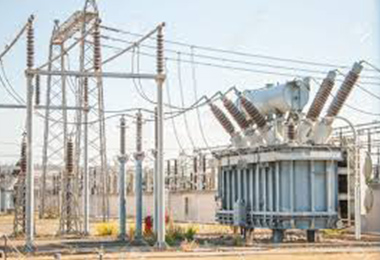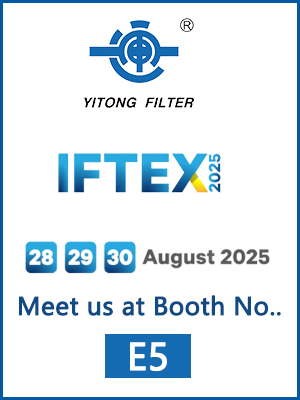Characteristics of water treatment in power plants:
1. After coagulation, a small amount of fine suspended particles can be removed by filtration.
2. The characteristics of filtered water in power plants are that the suspended matter content in water is low, generally less than 20 mg/L, but the water volume is large.
3. Particle filter is usually used. The commonly used filter materials are quartz sand, anthracite, heavy ore and so on.
4. The equipment is simple and easy to back wash.
Principle of filtration
Precipitation mechanism
That is mechanical closure. When the particle diameter in water is larger than the pore between the particles of the filter material, it will precipitate on the filter material and form an additional filter membrane. In the later process, this layer of filter plays a major role in filtration, which is called membrane filtration.
Fixation mechanism
Some suspended particulates smaller than the diameter of the filter material particles, due to various physical forces and adsorption forces, suspended particulates and filter materials and precipitated impurities adsorb each other, fixed on the surface of the filter material, the pore between the filter material particles gradually reduces, this filtering effect is called percolation filtration.
In the process of filtration, two mechanisms work simultaneously, of which membrane filtration is the main one.
Filtration process
In the initial stage of filtration, impurities were intercepted mainly in the top filter media, while most of the filter media were still waiting.
With the progress of filtration, the impurities of the upper filter material increase continuously, the voids decrease and the flow passage narrows. On the one hand, the resistance of water flow increases, on the other hand, the velocity of water flow increases, which enhances the scouring and peeling effect of the cut-off impurities, forcing some impurities to be conveyed downward, and the cut-off zone of suspended solids in water transfers from the upper layer to the next layer.
Continue filtering and the closure zone gradually moves downward.
When the front of the closure zone approaches the bottom layer, the turbidity of the effluent increases.
When the turbidity of effluent reaches the prescribed value or the pressure difference between inlet and outlet reaches the prescribed value, the operation of the filter should be stopped, and the filter will become invalid at this time.
As far as the quality of effluent is concerned, the failure point is the demarcation point of qualified effluent in the later stage of filtration, which is determined by the characteristics of filter bed and operation conditions.
Filtration speed
The filtration rate is related to the structure of filter media in the filter bed.
FILTRATION TERMINAL POINT AND DETERMINATION INDEX
Filtration endpoint
The end point of the filter is the stop point of the filter operation.
The end point of filtration is based on the failure point and can not be earlier or later than the failure point.
In actual production, in order to ensure water quality, the filtration is usually finished before the failure point.
Judgment indicators
The failure point corresponds to head loss, turbidity of effluent and filtration time. Therefore, all three can be used as judgement indexes.
In practice, pressure loss is often used as a judgment index of filtration failure.
Backwash
When the head loss reaches the prescribed value, the filter stops running and carries on the backwashing. The purpose is to remove the impurities retained in the filter layer and restore the filter material's ability to intercept pollutants.
Backwashing method
1. Water backwashing. Water flows from bottom to top, and the filter material is in suspension. With the help of shear force and friction force produced by the flow between the particles of the filter material, the retained impurities are peeled off and taken away by the flushing water.
2. Water backwashing with air scrubbing. Air and water enter from the bottom of the filter layer alternately, and air bubbles pass through and rise in the gap of the filter material, which expands the gap, makes the filter material particles rise, fall, rotate and collide, and makes the impurities adsorbed on the filter material peel off and take away by the flushing water. There is also the simultaneous entry of air and water from the bottom of the filter layer - called water-gas washing.
The effect of backwashing with air scrubbing is better than that of pure water backwashing.
Control of Backwashing Conditions
1. Backwashing Expansion Rate: The Ratio of Increased Thickness to Original Thickness when the Material Layer Expansion
2. Backwash strength: the amount of backwash water passing through the unit area of filtration per unit time
3. Backwashing time: the time of backwashing process
Filtration system equipment
The filter equipment can be divided into pressure type and gravity type according to the pressure condition. The former is generally called filter, and the latter is generally called filter pool.
Pressure filter, also known as mechanical filter. The main body of the filter is a steel pressure vessel. The upper part of the filter is provided with a water inlet device, and the lower part is provided with a water outlet (both with backwashing and water distribution) device. The filter material can be single, double or three layers. Filter types can be direct current, double flow or double chamber filters.
After the intake water is boosted by the pump, it passes through the filter layer from top to bottom, and the filtration is carried out under pressure.
Features: Small area, convenient management, stable effluent quality, wide application of power plants.
Double-layer pressure filter
The particle size of the upper filter material is larger, the gap between the particles is larger, the contamination capacity is larger, and the suspended solids are mainly removed by osmosis.
The granularity of the lower filter material is small, and the gap between the particles is small. The fine suspended matter in the water is removed through the filter membrane, and the quality of the effluent is guaranteed.
Gravity valveless filter
The water passing through the filter device has no external pressure. The inlet water flows downward to the filter by its own gravity, and then the outlet water enters the clean water pool at a lower position.
No need to use pump boost, the system equipment is simple. The flow rate is slow, the filter area is large, the equipment is huge and the area is large.
Valveless filter is named for its lack of valves. Gravity valveless filter is a common filter device in power plants.
It consists of a filter body, a water intake device and a siphon device.
The water intake device consists of a water intake tank and a U-shaped water intake pipe. Its function is to prevent air from entering the filter, so as to ensure that the siphon can be formed smoothly in the later stage of the operation of the filter.
The siphon device consists of upper siphon tube, descending siphon tube, assistant siphon tube, sink and siphon destroying pipe. The function of the siphon device is to form a siphon at the end of filtration and destroy the siphon at the end of backwashing.
Characteristic:
Automatic filtration and backwashing
Variable Head Equal Velocity Filtration
In the process of filtration, the water level in the siphon riser rises with the extension of filtration time, the increase of suspended matter in the filter layer and the increase of resistance. The increase of water level compensates for the change ratio of resistance of the filter layer. It is in the state of constant velocity filtration with variable head until the backwashing begins.
Variable Strength Backwashing
In the backwashing process, with the decrease of the water level of the flushing tank, the flushing intensity gradually decreases. At the beginning of backwashing, there are many impurities in the filter layer, so backwashing intensity is needed. With the gradual cleaning of the filter material, backwashing intensity decreases gradually, which is very beneficial to the flushing effect.
The height of the siphon auxiliary pipe orifice is not only the allowable head loss at the end of filter filtration, but also the depth of the siphon destroying pipe insertion determines the time of backwashing and the amount of backwashing water.
Advantages: simple structure, low cost, convenient operation and management.
Disadvantage: The siphon is very high and the filter can not be cleaned by air.
Systems and equipment
Water pretreatment includes coagulation, sedimentation clarification, filtration and other treatment processes. The main equipment consists of mixer, reaction tank, sedimentation tank or clarifier, filter, water tank, water pump and auxiliary equipment, such as coagulant dosing unit, coagulant dosing unit, etc.

Previous: None
Next: None

